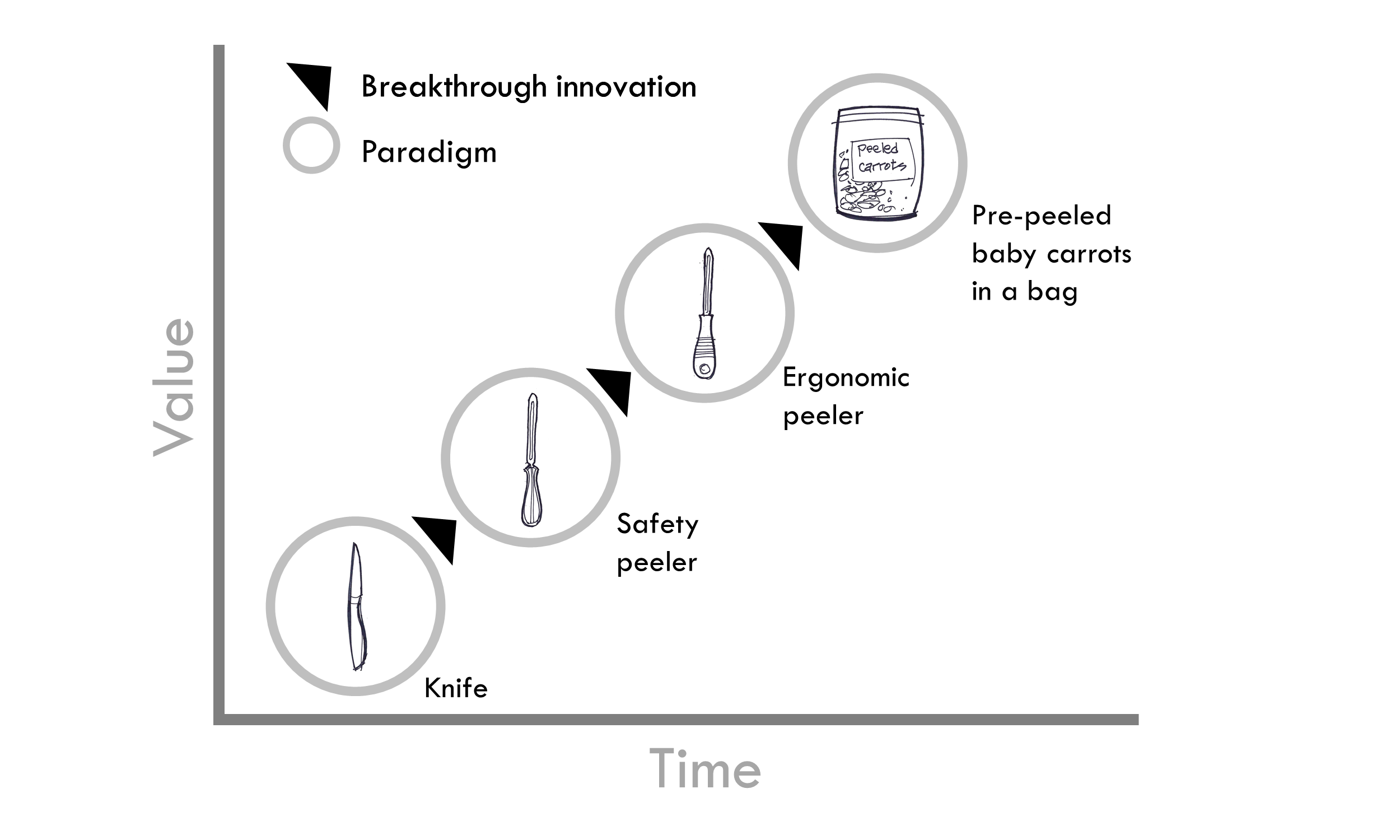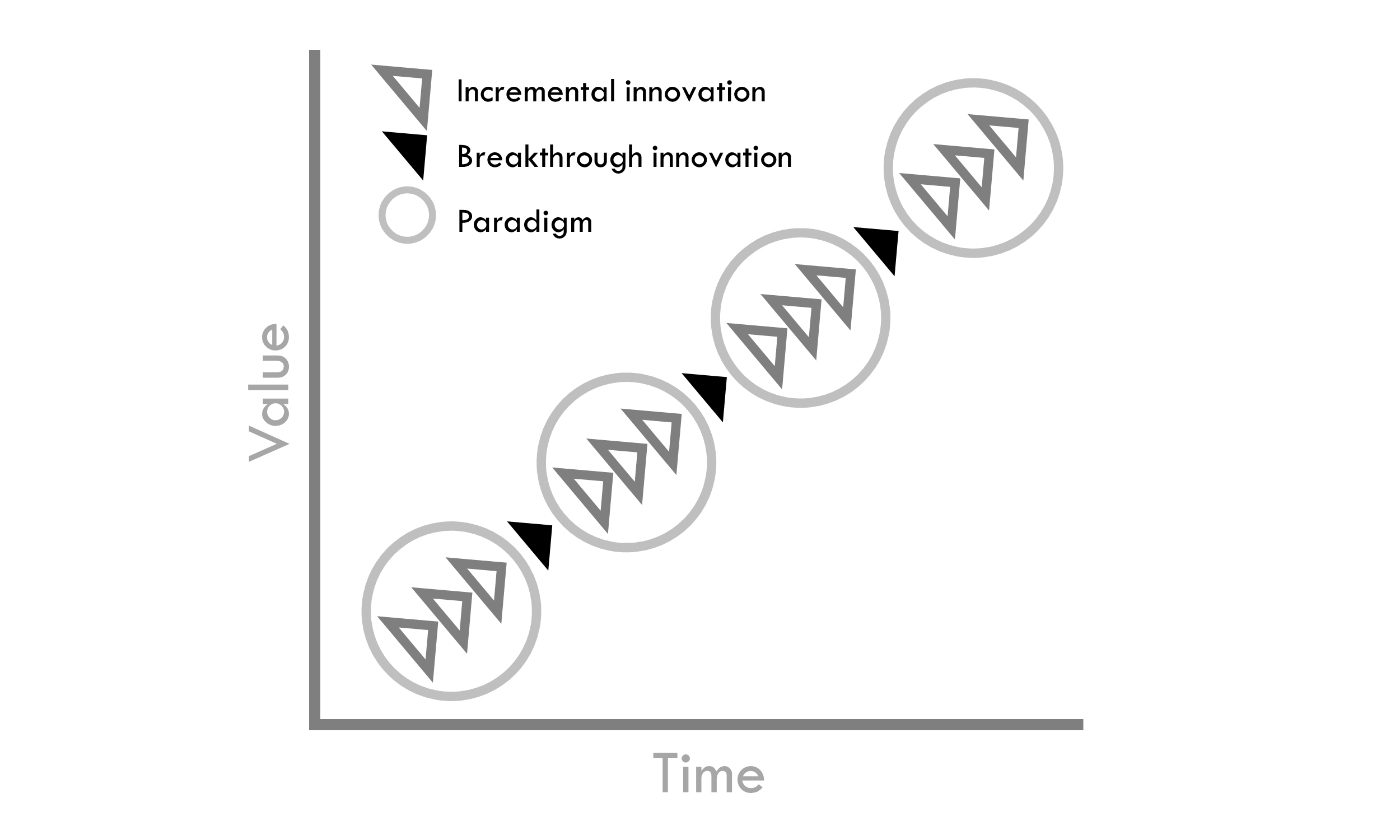Digging deeper: What Breakthrough Innovation looks like
A hundred or more years ago, if you wanted to peel a carrot, you would have used a knife. If you were not very good at it, your peels would be too deep or too shallow, and rarely would you finish without the chance of hurting yourself.
In the first part of the twentieth century, it became apparent to some insightful and industrious individuals that there was a better way, the safety peeler. The sale of these dedicated peelers surged, as they addressed the need not only for safety but also for reproducibly shallow and uniform peels.
In 1990, Sam Farber upended the peeler industry by introducing the ergonomic peeler. You now could peel to your heart’s content without your hand becoming fatigued by gripping the steel-handled peeler.
At roughly the same time, Mike Yurosek began processing full-sized carrots into pre-peeled “baby carrots” sold in a plastic bag, making consumption convenient in ways it had never been before.
This series of transitions is depicted in the following image.

We can generalize this with the next figure. Each of the four product types depicted in the figure above represents a Paradigm within which competition remains generally constant, with companies pursuing Incremental Innovation such as optimizing performance, simplifying manufacturing, and reducing cost. Yet once someone recognizes an opportunity and successfully implements a Breakthrough Innovation that changes the basis of competition, they move the industry into a new Paradigm, renewing the industry and enabling the innovator to survive and thrive in ways not available to others.

tt
Digging deeper: What Breakthrough Innovation looks like is based on content appearing in Vojak & Herbst, No-Excuses Innovation: Strategies for Small- and Medium-Sized Mature Enterprises © 2022 by the Board of Trustees of the Leland Stanford Junior University. All rights reserved.
